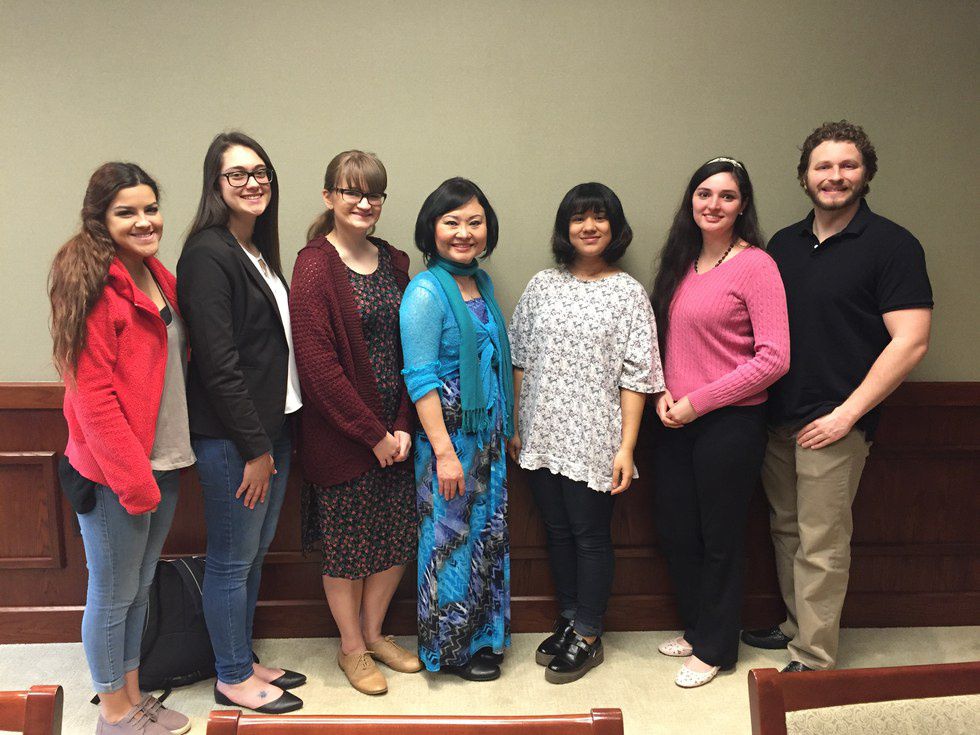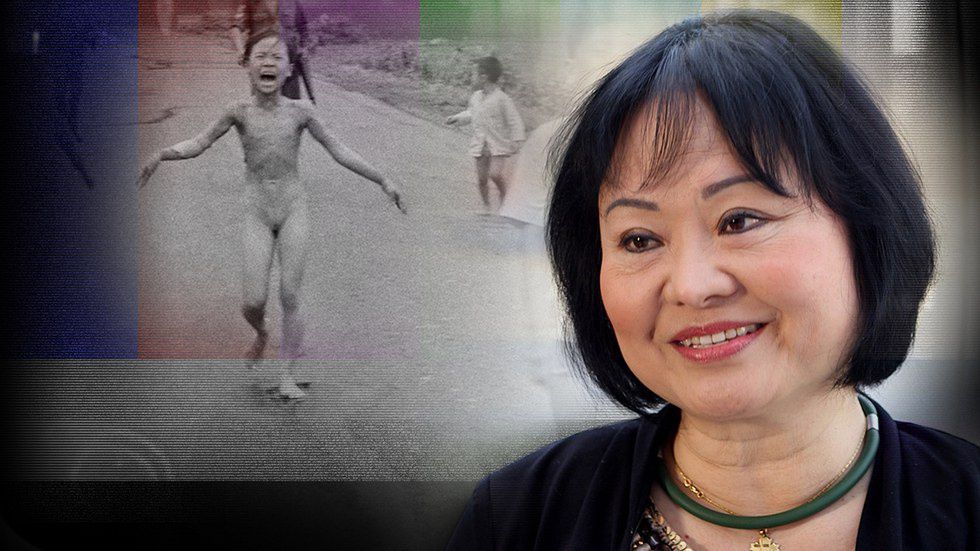Every year, Elizabethtown College invites a global leader onto campus to speak with faculty and students about human rights, social change and conflict resolution. The campus community recently welcomed Kim Phuc, “The Girl in the Picture”, as the 2016 speaker for the Ware Lecture on Peacemaking. Phuc was just nine years old in 1972 when the Americans and the South Vietnamese Air Force dropped napalm bombs on her village near Saigon. After the attack, Phuc was photographed running down the road, screaming out in pain from the burns on her skin. This Pulitzer Prize winning image, captured by photographer Nick Ut, is perhaps the most unforgettable and haunting image from the Vietnam War. Phuc, now a UNESCO Goodwill Ambassador and the face of the Kim Foundation, a non-profit organization committed to aiding children in war-torn areas across the globe, is determined to share her message of peace and forgiveness with young people around the world.
What lessons have you learned from the aftermath of your experience?
“If we are lucky, we can learn from our own experiences and they can make us stronger,” Phuc said. The napalm attack had left such severe burns on Phuc’s skin that she was not expected to live and was left to die in the morgue. Miracously, Phuc was found by a kind doctor who made the decision to transfer her to another hospital. With the help of many doctors and multiple operations, Phuc was able to return to her village with her family and begin to rebuild her life.
When she was 19, Phuc was forced to quit school so that the Vietnamese government could use her as a “national symbol of war”. Phuc was under constant supervision by the government and was unable to make any decisions for herself. After demanding that she be allowed to attend school, Phuc was sent to Cuba to attend the University of Havana. During these years in her life, Phuc says that she was truly able to understand the importance of freedom. “I’m so happy to see you all living in a free country. You never know how blessed you are. Please don’t take it for granted,” Phuc said.
What was it like to start a new life in Canada?
While traveling home from their government organized honeymoon in Moscow, Phuc and her husband made the risky decision to seek out political asylum in Canada. Phuc explained that it was a challenge to create a new life with her husband in a place where everything was different. For the first three years of living in Canada, she and her husband relied on the welfare system to provide shelter and food. The pair quickly realized that it was essential for them to go to school and learn English if they wanted to continue to live in Canada. Thus, for the first three years after settling in Canada, Phuc and her husband used their food money to purchase bus tickets to get to a local university and received food from the local food bank. To Phuc, these sacrifices were both necessary and worthwhile. “When we have freedom and each other, we have everything,” she said.
You frequently travel around the world and meet all kinds of people. What is one of your most memorable experiences?
When Phuc visited Japan a few years ago, she was accompanied by a translator as she traveled the country to speak with civilians. At the end of her trip, Phuc’s translator pulled her aside to tell her just how inspiring she was to him. “I am a part of your audience of supporters. You give me hope of forgiveness. When I see you, it’s all so real. I can see from your heart that I can do it. You gave me hope to learn to forgive,” he said. This moment truly struck Phuc and reminded her of just how much she was impacting the lives of others.
What is your message for people who are struggling to forgive others?
“To learn how to forgive the ones who had caused my suffering was a huge challenge. It seemed impossible for me because I am only a human being,” Phuc said. When Phuc meets people whose hearts are full of hatred and bitterness, her first instinct is to share her own story of forgiveness with them. “I should have died. My skin should have burned off my body. But I’m alive.” Phuc was able to appreciate that she had been given a second chance at life and she decided that she wanted to live without overwhelming hatred and negativity. “I poured out my hate every day, a little bit at a time. At first, it seemed like it would just fill back up again. But then I started filling up with light, love, patience and forgiveness. I was finally free and that was heaven on Earth for me.”
Has the iconic photo impacted your life in a positive way?
“That photo controlled me for so long. If I couldn’t escape it, I could work with it for peace. I still carry my past. I won’t forget it. The war could not kill my life. The war could not kill my hope. The war could not kill my future. We cannot change history but with love, we can change the future. The challenge for all of you is that if that little girl can do it, all of you can do it too.”
Phuc’s life was forever changed by one photograph that shook the entire world. Over time, she has come to embrace the photo and to speak out to people around the world about her experiences. For all of those who have and who will view the iconic image, Phuc asks one simple thing. “Try not to see this picture as a picture of war. Try to see that little girl in the picture as a symbol of peace.”























